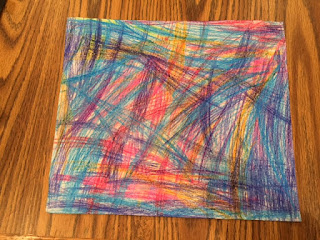The video is of Oliver, Jett's 25 month old brother who has cerebral palsy, feeding himself his supplements. I did make too many (11) so he ate 3-4 at the first sitting and 4 at the next and then the rest a couple of hours later. But that's okay because he's still getting them! Since then, I've been adding much less nut butter and making only about 4-5 "party balls" so he eats them all by noon.
And here's Jett's (5 years old) review of them while doing a little math. (I swear, HE started the math -- I was just following his lead.) :)
Recipe for Supplement Success
They are a gluten and casein free, nutrient-dense treat.
Party Balls
Ingredients
You can purchase all the ingredients here.
- Supplements of your choice (See how to decide what to give here.)
- Nut butter of your choice (preferably sprouted and organic so that it becomes a nutrient as well rather than an anti-nutrient) or dates/figs can replace the nut butter:
Pumpkin seed butter or smashed dried dates/figs
Sun nut butter
Peanut butter
Almond butter
- Organic sweetener of your choice:
Stevia (plus one of the others)
Manuka honey
Maple syrup
- Pink Himalayan sea salt (as needed)
- Organic "goodies" of your choice:
Puffed amaranth
Shelled hemp seeds
Chia seeds
Coconut shavings/shredded
Finely chopped organic, unsulphured, dried goji berries
Finely chopped organic, unsulphured, dried gooseberries (amla)
Chia Goodness cereal like apple almond (It's not organic but it's quicker and cheaper--in the short term--because it has most of the ingredients already in it.)
Directions
These are the supplements that Oliver is eating in the video: 1 MitoQ, 2 Curcumin Longvida, 1 Partoid PMG (for detox), 1 MegaFolinic, 2 Stress Guards (organic B vitamins with adaptogens), Mega Food Zinc, Raintree Immune Support (natural antivirals/antibacterials/antifungals), 2 Vitamin Code Vitamin Cs, 2 Cognitex (brain support mix), 2 Prenatal Fish Oils and 2 Garden of Life Children's Multivitamins.
1) Crush tablets, open capsules and squirt soft gels into a bowl.
2) Add a nut butter to the supplements with a bit of cinnamon and stir until well blended. Taste. Then add a tiny bit of salt (helps with bitter flavors), a drop of stevia and a bit of maple syrup (helps with sour flavors) until you think your child will like it. The first time you make it, I'd err on the side of a little too sweet just so that he'll like it. Then once he already thinks of it as good, then the next time you can make it less sweet.
Notes: It seems that the less the mix contains synthetic ingredients, the easier it is for their palates to tolerate. When I buy the raw sprouted pumpkin seed butter, I try to buy it without added sweeteners or salt so I can add my own. When I first open the jar, I stir in some pink Himalayan sea salt (more nutritious than processed salt) and maple syrup if absolutely necessary. I would use manuka honey instead of maple syrup, but both Jett and Oliver muscle test negatively for honey at the moment.
3) Get some nutrient-packed goodies and put them in a bowl and stir. Pictured: Chia Goodness cereal, shelled hemp seeds, chia seeds and puffed
amaranth. I also add coconut
flakes and finely chopped goji berries or gooseberries.
4) Roll the nut butter/supplement mix into balls and put in the goody mix.
Note: Now, I smush the balls into the mix first so that the goodies are incorporated throughout the nut butter then I roll into a ball. I add more puffed
amaranth to coat the outside.
amaranth to coat the outside.
5) Coat with goodies and give to your little one for a healthy treat that he can feed himself and you can feel really good about!
Note: If there's any extra goodies left over that I didn't use, I put in a wax paper baggie and use for the next day.
Make Ahead Suggestions
- Premix the "goodies" in a wax paper bag for quick easy mixing the morning of.
- Put the unopened capsules, uncrushed tablets and unpunctured softgels in a small container ready for the next day.
- I don't know that I would premake the balls other than one serving the night before because you can't be certain how potent the supplements would stay. I do make mine every morning. I did premake it once and the balls were more crunchy on the inside. Jett enjoyed that texture was well as the softer texture of the freshly made ones.
Related Posts













.JPG)









